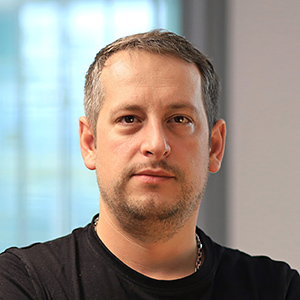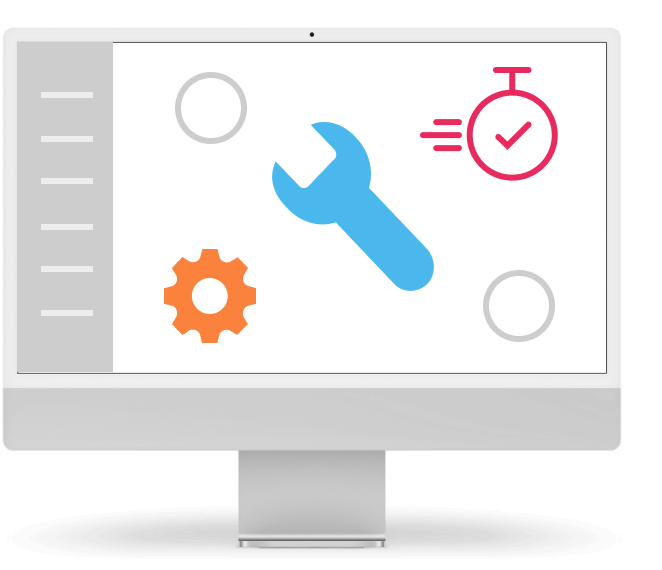Best practices in deploying and managing a heterogeneous cloud
In general, however, it can be said that cloud solutions are either homogeneous or heterogeneous. For the first, we are looking at solutions that rely on a single provider. But in today’s article we will be interested in the second one, which you may also know under the name multicloud.
Although the name itself suggests that there are multiple cloud providers for one company and therefore more work, there are companies for which this approach is really beneficial, for example with regard to performance optimization, greater flexibility or the elimination of risks associated with potential vendor lock-in.
But this article is not intended for companies that deciding on multicloud. It is for those that have already decided on multicloud, and our goal is to help these companies make the most of their environment. Here is a clear guide, which of course our technicians will be happy to supplement personally for individual solutions.
1. Strategic Planning
When choosing a multicloud, it is necessary to go more in-depth in strategic planning. In order to choose the right cloud puzzle, it is needed to clearly define the business goals to which the change is intended to contribute or affect. These may be purely technical areas such as scaling or redundancy, but multicloud can be the answer to improving customer experience or optimizing costs.
So it is very important to clearly define what multicloud is supposed to help with. It is not just a matter of defining general categories. The next step is to list specific areas. Multicloud has the advantage that we can assign services from different providers to individual needs so that they are covered as efficiently as possible. But in order to do that, we need to know those needs in detail.
At the same time, our needs will also be reflected in the established internal processes, which will indicate the characteristics of individual solutions. These processes may relate to definitions of performance, security, compliance with legal requirements or data sovereignty (as we know for example given GDPR).
The more to detail you can break down individual goals, the better the architecture will adapt to you. Therefore, it is not advisable to underestimate the initial analysis and preparation, because efficiency is very fragile in multicloud and if you do not go into detail, the more fragile it becomes.
2. Architectural Design
Before you dive into comparing your goals and needs with what providers offer, there’s one more intermediate step. If you were to simply choose, for example, virtual private servers or microservices to cover your needs, you run the very risk that multicloud aims to eliminate – and that is vendor lock-in.
In order to prevent this from happening, it is necessary to decide what type of architecture you will choose for your multicloud. Technologies and approaches that are not currently tied to a specific provider are the most appropriate choice. Among the most obvious ones is the use of containers – for example Kubernetes or Docker – in combination with a standardized API for the tools you will use to assemble the architecture.
Thanks to the use of orchestration and standardization, the result will be a compatible, flexible and unified environment that will be easily managed across providers.
But you must not forget about other elements that ensure business continuity and effective disaster recovery. These tools include architecture built for HA and automation of steps such as load-balancing and scaling. Therefore, if something were to threaten your operation, the internal systems can automatically react and adjust the architecture in such a way that the damage is minimized as much as possible.
3. Market Research
So now you can combine your needs, the proposed architecture and find providers that cover the individual elements of your solution. In addition to your internal requirements, the research should also address the provider’s strengths and weaknesses, geographic coverage, service offerings, pricing models, and the risk of vendor lock-in. In our country, it is also necessary to compare the requirements of the GDPR and the ability of the provider to always adhere to it.
Also evaluate whether the offer and features you will find at individual providers are really necessary for you. Thanks to these steps, you will get a multicloud mosaic in which all the particles fit perfectly and form a perfect picture for your IT operations.
4. Clear Role Definition
Once you have chosen, you also know what management options each provider offers. Thanks to this, you can create an internal manual for working with your multicloud environment. In it, employees will find not only clear definitions but also an approach on how to deal with the environment. It will also include a list of roles and their responsibilities, how to work with resources, definitions of approaches, data management and also cost allocation.
This document can serve as a proof of responsibility, and in the event of any problem, it is thus possible to solve it effectively, because everyone knows how to behave in such a situation and what their role and responsibilities are.
5. Management, Optimization and Problem Solution
But in order for employees to work effectively and the multicloud manual to be really useful, a platform for managing all environments in one place must still be deployed.
Thanks to this, the technical department has full control over all resources, but the management has a clear overall idea of the costs.
From a technical point of view, this constant monitoring provides information about the health of the entire system and its individual parts. It is possible to reveal bottlenecks or weaknesses in security.
From a managerial point of view, this platform is a great tool for cost optimization, as it is possible to see the efficiency of resources used. These results can then lead to a reassessment of the architecture – for example, the resources of individual parts are optimized or reserved or spot solutions are selected, which will be the most cost-effective for the given need.
The benefit of such a platform is therefore global for the company.
Summary
A multicloud solution may seem like a counter-intuitive choice, but if the needs of the business are correctly assessed, it can be the most effective solution that can be found. Just don’t underestimate the individual steps of our mini manual, otherwise then they can be very expensive.
You can also easily end up in vendor lock-in, which is one of the biggest threats to companies. It is difficult to find optimization options in it, because your hands are tied by the options of one provider.
So take advantage of an in-depth analysis to be able to uncover all the needs as well as the hidden dangers that may be lurking for you.





